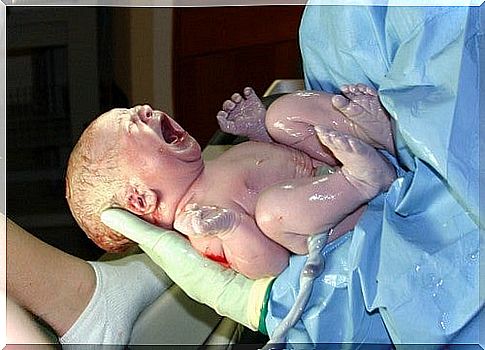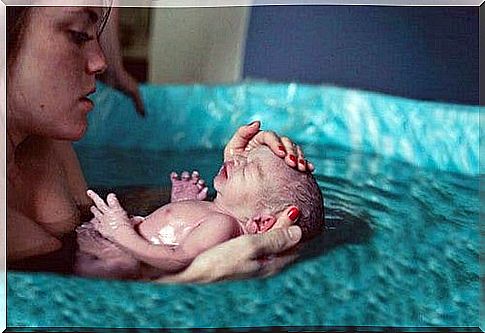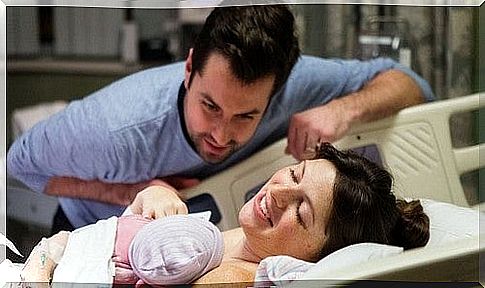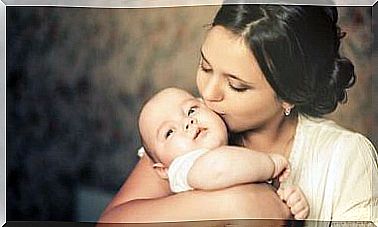Different Types Of Births: Are You Familiar With Them?

Did you know that there are many different types of births ? Childbirth is a special moment in every woman’s life. Therefore, it is very important that women have all the information they need when it comes to the different types of births that exist. Only there will they be able to decide which one is best for them.
The 9 different types of births
Natural birth:
Natural childbirth refers to vaginal birth. But it is different from “ordinary” birth, as it takes place without the use of anesthesia and painkillers. Artificial oxytocin is not used to stimulate labor, and doctors do not perform procedures such as episiotomy.
This method is focused on the mother and the respect of her needs and choices. Therefore, the method is considered to be more humane. With a natural birth, the mother can choose where she wants her baby, whether it is in the hospital or at home.
Normal birth:
This is known as vaginal birth, as the baby is born through the birth canal (vagina). It happens spontaneously and the baby is born with cephalic presentation. In other words: the baby’s head is placed in the mother’s pelvis to prepare for the birth.
In some cases, complications can occur that make it difficult for the baby to get out. When this happens during normal birth, an episiotomy is performed. An episiotomy is a surgical incision made in the lumbar region – the muscular area between the vagina and the anus.
There are many benefits to having a vaginal birth. A normal birth guarantees that the baby’s lungs are sufficiently mature. It also means that the baby will have instant contact with the mother during the first moments of life.
This gives the baby an early opportunity to be breastfed and it also reduces the possibility of respiratory ailments and other diseases. Vaginal birth reduces the risk of bleeding in the mother. It also involves a shorter postpartum period and earlier contact with the baby.
Below are several different types of births:
Water birth:

Water birth takes place where the mother is in water in a bathtub during childbirth. The mother’s abdomen must be completely covered by the water. During a water birth , the father can also be in the bathtub to accompany and support the mother in this important and intimate moment.
The mother is placed in a tub of warm water during childbirth. The mother should go into the water when she has expanded more than 5 cm. She should already be experiencing frequent, intense contractions – more than two contractions every 10 minutes.
Standing birth:
This birth option is similar to natural childbirth, except for the position of the mother. Instead of lying down in a normal, gynecological position, the mother should squat. Standing births tend to be very fast.
As the mother is in a vertical position, gravity increases the birth process. This position is usually more comfortable than the gynecological position.
Birth with forceps:
The forceps are used during a normal birth when the baby has great difficulty getting out. The pliers are an instrument that consists of two parts that bend at the end to grab the baby’s head.
To insert the forceps and reposition the baby’s head, doctors are first down to perform an episiotomy in the perineum. Once the forceps are in place, the doctor will press when the mother feels the need to press during a woe.
Leboyer birth:
This birth, also known as non-violent birth, is a type of birth that strives to avoid stressing the baby. The French obstetrician, Frederick Leboyer, developed these techniques to reduce trauma as much as possible during the baby’s first experience outside the womb.
The idea is that the birth should take place in a quiet environment that resembles the mother’s womb as much as possible. This means dim lighting, calm and hot temperatures. These factors mitigate the impact of the drastic differences between the intrauterine world and the world outside the mother’s womb.
Cesarean section:
Unlike the aforementioned different types of births, babies are born through an incision in the mother’s womb when it comes to cesarean section. The incision cuts through several layers to reach the fetus inside the uterus and take him out through the same incision. The placenta is removed once the baby is taken out.
Since cesarean section involves surgery, the postpartum period takes longer than a vaginal birth.
Home birth:

More and more women are choosing to give birth at home. This is not something to be afraid of. In fact, women end up feeling more secure and more free in their own home. This birth method is painful but the women are prepared for this and consider it to be part of the process. There are many resources available to relieve the pain – this includes hot baths and massages.
This method is known to be long as it can last from 12 to 16 hours. It is the midwife’s mission to accompany the mother all the way through the birth, hold her hand, help her find the most comfortable position, give massage, etc.
Humanized birth:
Humanized birth refers more to an attitude than a method. The woman is the main character in the birth of her child. Her decisions are respected and discussed with doctors, and medication is used based on scientific evidence.
In short, a humanized birth is treated as a common psychological process that very rarely requires actual intervention.









